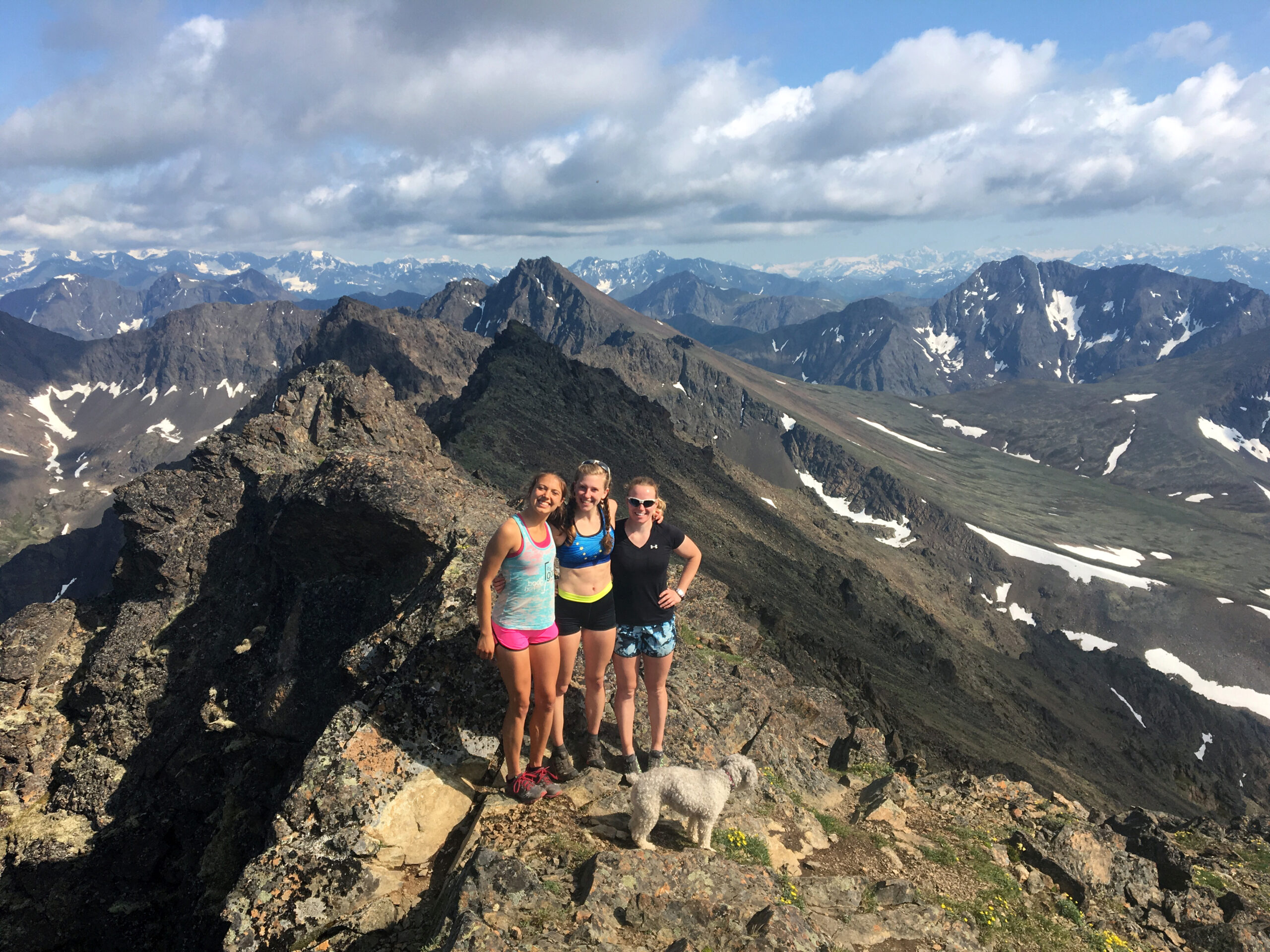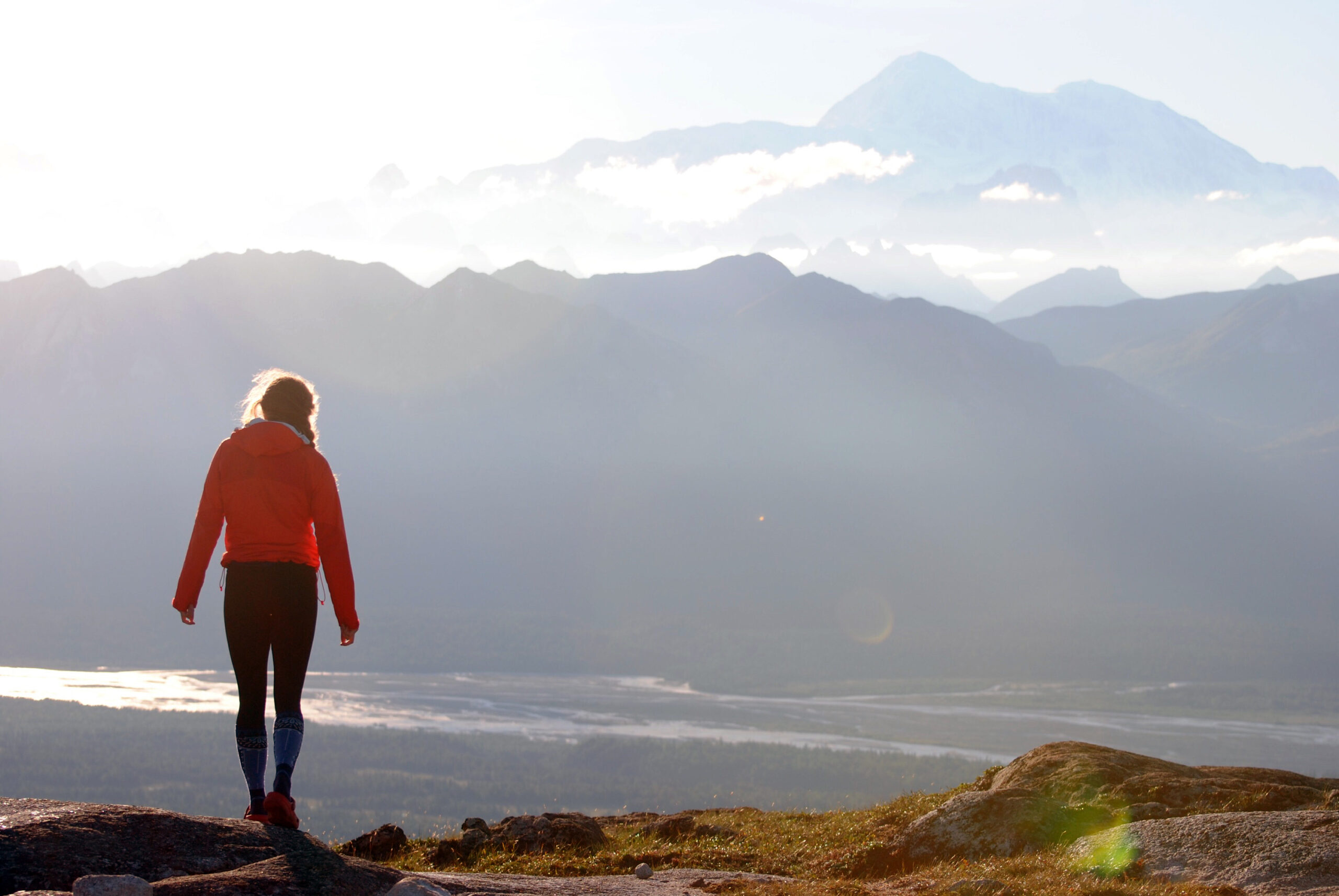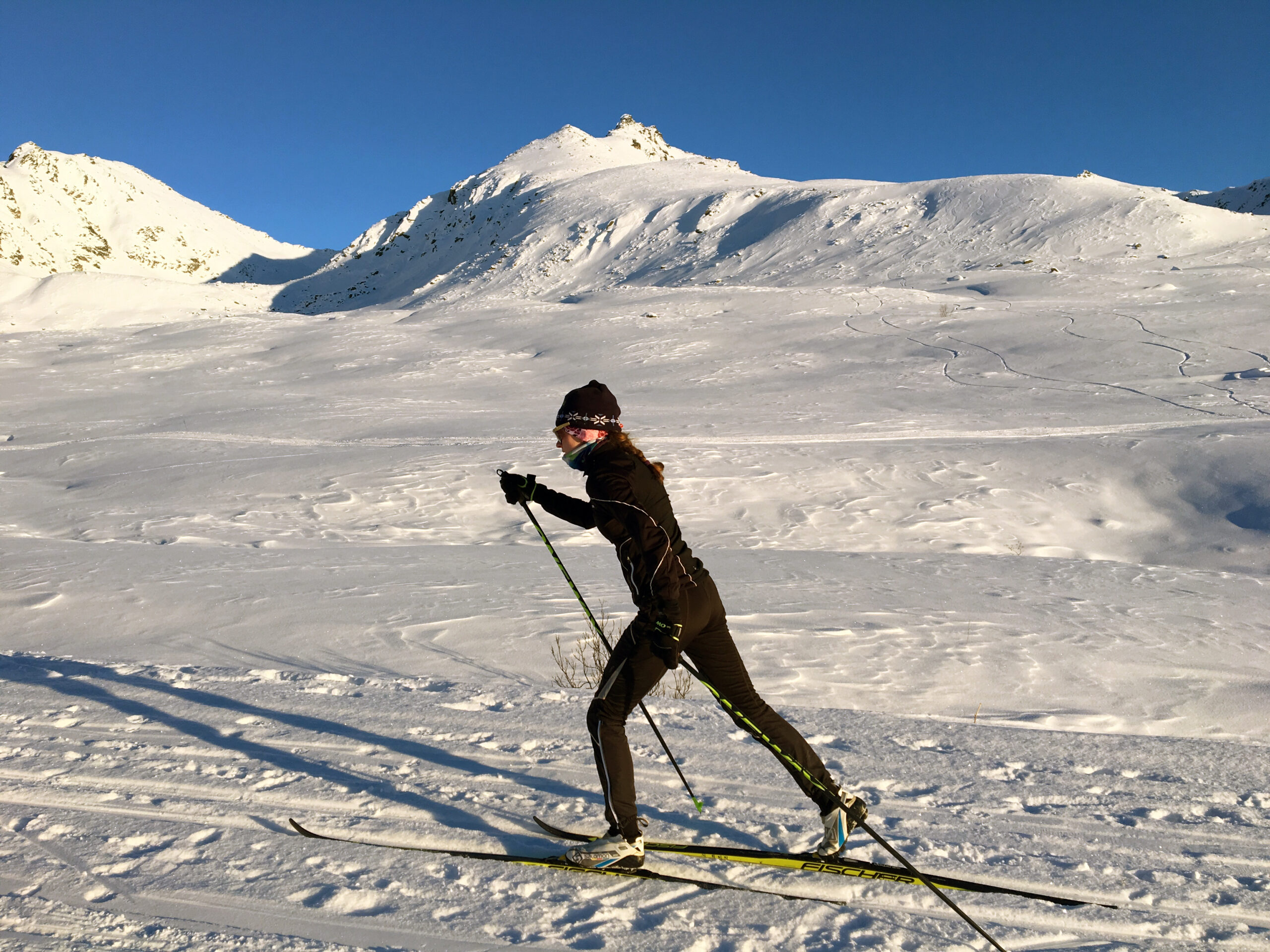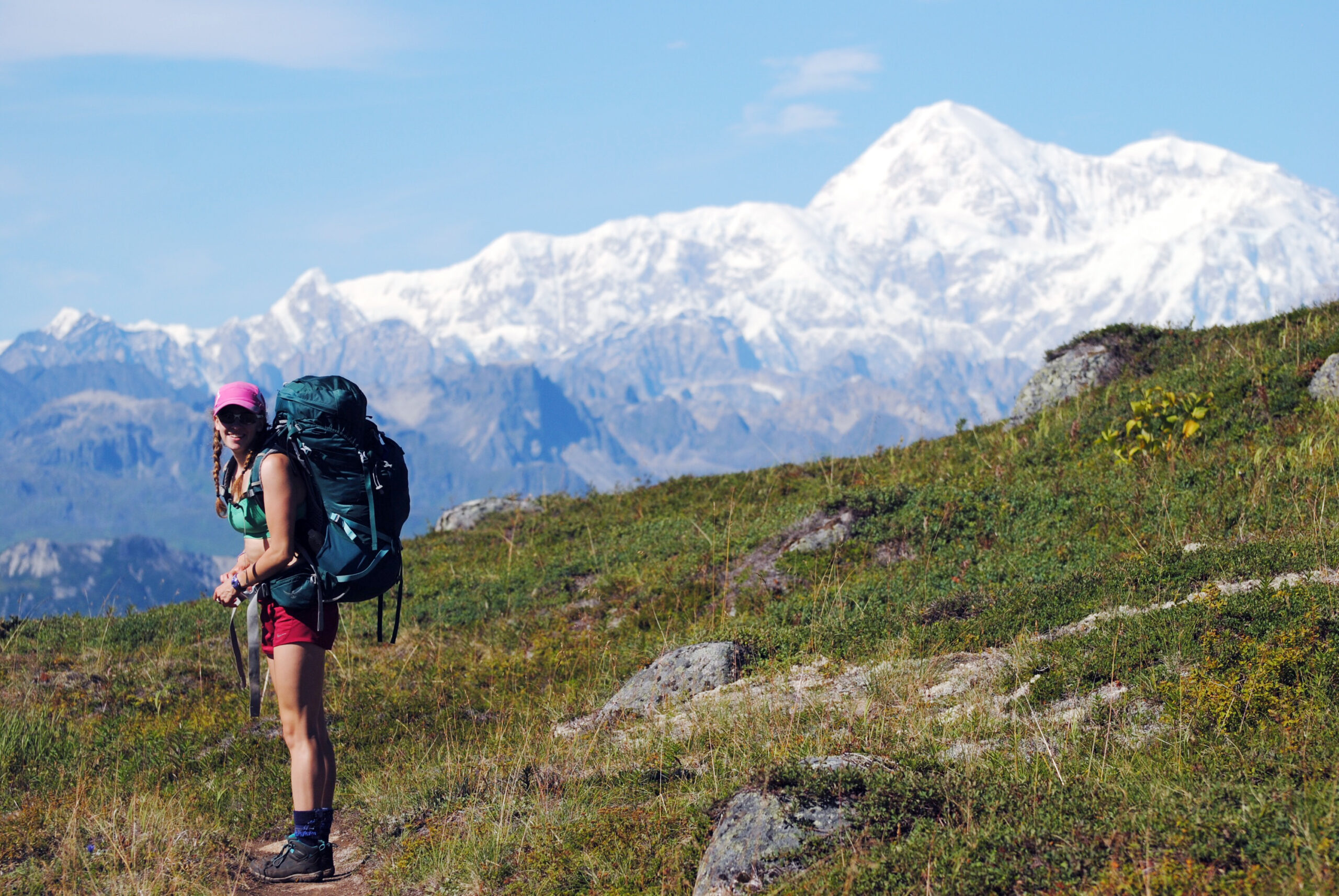True north: reflecting on life in Alaska
April 6, 2018
 Courtesy of Mitchel Jurasek
Courtesy of Mitchel JurasekScuffed Carhartts, funky mountain art and red walls keep the warmth inside Kaladis Brothers Coffee during the dark winter months, when a cup of coffee is about 130 degrees hotter than the temperature outside. Although Rachel Zafren ’18 spends most of her year away from Anchorage, every other customer is coming up to talk to her.
Zafren makes a bold claim: you can’t find a place more beautiful, more unique or a better community to grow up in than Anchorage, Alaska.
Anchorage offers more than just tall snowy peaks with glaciers flowing from their crevices into the sea—yes, even more than views of the ominous Denali, the tallest mountain in North America, and the glistening purple and green northern lights dancing like silk in sky. The inhabitants of this northern paradise know this, and so you won’t usually catch a local gawking at the landscape. The people who live in this wild heaven continuously find ways to take advantage of all it has to offer.
“The access to the outdoors in Alaska is really unparalleled by anywhere I have been, and any place I can think of,” Zafren said. “I love that my friends and I hang out by hiking a mountain or skiing. I have vivid memories of hiking up a mountain called O’Malley in the spring and sliding down the snowy mountainside on our butts. I grew up having a lot of fun, hiking, biking, skiing, being encouraged to get outside and spend time with people in the outdoors.”
 Courtesy of Mitchel Jurasek
Courtesy of Mitchel Jurasek“A lot of that is my family, but it’s also due to the town,” she said. Although Anchorage has over 400,000 residents, when locals refer to Anchorage, they often call it “the town.”
“The town” is full of quirks. Flannels, Carhartt Overalls, Swix ski pants and clogs are common fashion choices among its citizens. The XtraTuf rubber mud boot, which approximately 40% of the coffee shop’s customers are wearing, have recently come out with new ocean-themed prints in their liners. This way, after using them on a fishing vessel (where the brand originated), you can roll down the top and show off an octopus or sea star as you strut around the town.
“When I travel I can tell how far away from Alaska I am by the mannerisms and clothing styles that are different. In Anchorage, people famously don’t care what you are wearing. I can go to the grocery store in pajamas or ski wear and no one cares,” Zafren said. “But also in what we do. Like I know a lot of people who are like, ‘I’m gonna go fishing or hiking and biking and that’s how I’m going to spend my social time,’’ she continued.
Although it may appear laid back, Anchorage fosters a community that values healthy lifestyles and fitness. Zafren, a Nordic skier trained in Alaska but now skiing for Bowdoin, explained that many of the races and events put on in the city are fully supported by some its most famous businesses.
 Courtesy of Mitchel Jurasek
Courtesy of Mitchel Jurasek“So many businesses in Alaska give back and support things not for commercial reasons, but because we have such a tight-knit community and the people who run these businesses genuinely care about the community. Places like Moose’s Tooth Pizza (famously rated the third best pizzeria in the United States by TripAdvisor) and Kaladi Brothers Coffee shop support so many things I care about, like ski teams and running races and community events,” Zafren said.
The hard work of these businesses is seen not only as a result of the owners and their workers, but also as an effect of the community’s effort to shop local and boost the economy. The tight-knit culture of this state means that locals want to support their neighbors and are hesitant of big box stores.
“We still didn’t get Target until I was in high school,” Zafren said.
Kids in Alaska aren’t used to hanging out at the mall or lounging around the local multinational retail conglomerate. From a young age the residents of the state are given opportunities in the outdoors that some deem extreme. Whether it be running up a mountain with friends in middle school or “sending” a cliff on skis in the 9th grade, Alaskan children push themselves to their limits.
The state is known for being rugged, with some of the most temperamental, harsh climates on Earth and healthy circulation of the bush plane. These small but sturdy planes are equipped with one or two propellers and act as the only method of transportation for people in 80 percent of the state. All Alaska’s public roads total little over 12,823 miles. Vermont, sixty-two times smaller than Alaska, has more. With all of that raw land and wild weather, people need to know how to get gritty and work hard.
“Everyone is all so hardcore. My grandpa was the first pediatrician in Alaskan, back when it was more rugged than it is now, so anyone who is my parent’s age probably had him as their doctor. My grandmother flew a bush plane and had a clinic for prostitutes. So, I think it is interesting because everyone is connected here and also everyone sets a real example of what you can do by just putting in some hard work,” Zafren said.
 Courtesy of Mitchel Jurasek
Courtesy of Mitchel JurasekRecently on a trek back to my hometown of Talkeetna, my father told me that Zafren’s grandfather was his pediatrician. Talkeetna is a small climbing community about a two and a half hour drive from Anchorage, but the small town feel of Anchorage is extrapolated and can be felt across the state. Zafren’s family happens to have a cabin in Talkeetna. Last summer, I ran—or rather, rollerskied—into Zafren on a bike path there.
Sporting ski gear and eavesdropping on other patrons discussing the wax of the day, Zafren and I talked local celebrity and Kincaid snow conditions. Kincaid park is a 1,400 acre area filled with old-growth forest and ski trails. At that time in January, it looks like a Narnia winter wonderland.
The same park that Zafren and I have trained in for years is used by some of the most elite athletes in America. Out of the eighteen Alaska sent to the 2018 Winter Olympics in Pyeongchang, twelve were Nordic skiers and ten of those skiers competed for the United States. That means that Alaskan Nordic skiers took up half of the US Nordic team.
“The ski community here is so supportive, helpful and vibrant. You train with and see Olympians often like Kikkan Randall. This is her fifth Olympics and she is out there skiing right along with us and advocating for healthy futures,” Zafren said.
Kikkan Randall is an icon in Alaska community. This year, along with being one of the only mothers at the games, she became (along with Jessie Diggins) part of the first gold medal podium in US Nordic history at the Olympics.
Nordic skiing, and the community it fosters, is euphoric and wild to Zafren. She tries to enjoy the sport in every season, whether that be in the blistering -30 degree December weather, rollerskiing in the sun or crust skiing in the spring on wind-blown mountain sides (her personal favorite).
Zafren seemed hesitant when I asked her about if she would live anywhere else. She knows that she probably won’t be able to come back to her home directly after college, but eventually hopes to settle in the same town her grandparents did. The opportunities Alaska naturally provides would be hard to find elsewhere.
“I’m from such a cool place and I try to take advantage of all it has to offer. And Alaska offers a lot,” she said.
Bowdoin Back Home
Over winter break, the Orient dispatched writers to bring stories from their homes back to Bowdoin. Though we don’t often acknowledge it, Bowdoin is shaped by our experiences in these places, just as we are. Some of these stories will contain the writer’s experiences while others will put a spotlight on their peers. All will share insight into the places and people we bring with us to Bowdoin.
Comments
Before submitting a comment, please review our comment policy. Some key points from the policy:
- No hate speech, profanity, disrespectful or threatening comments.
- No personal attacks on reporters.
- Comments must be under 200 words.
- You are strongly encouraged to use a real name or identifier ("Class of '92").
- Any comments made with an email address that does not belong to you will get removed.

The nice thing about living in Anchorage, you are a short drive to Alaska.